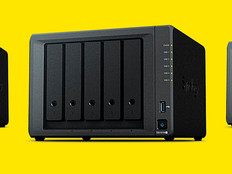Everything You Need to Know Before Entering the Cloud
Cloud computing offers major cost savings and less-complex IT infrastructures, but you need to make sure your IT staff and faculty are prepared.
With an IT staff of just himself and a part-time assistant, Doug Murphy has his hands full as the technology director for the Bath Community School District in Michigan.
As Bath moves forward to establish a one-to-one program for its 967 students, Murphy envisions providing each of the district's students with dedicated machines to offer greater access to technology, learning tools and online resources.
The district wants to acquire approximately 400 netbook computers to supplement its existing student desktop environment. It also bought a handful of Acer Aspire One netbooks over the summer, which are being used by some elementary school teachers, says Murphy.
The relatively low cost of the netbooks, combined with the recent use of cloud computing applications, should help the district meet its one-to-one goals when it begins a full implementation of the devices planned for the 2010–2011 school year.
Murphy says he doesn't think the district will need to make any substantial changes to its wireless infrastructure, which is supported by 16 SonicWall SonicPoints through a Gigabit Ethernet fiber-optic connection that runs between its three buildings. The network is connected to the Lansing, Mich., fiber ring.
Bath's use of Google Apps, for example, freed up enough money for the district to buy 20 percent more network bandwidth for the 2009–2010 school year, says Murphy. By liberating the school district's software licensing costs, he can apply some of the cost savings toward the purchase of netbooks and other computers for the one-to-one program.
“It's nice for me to walk in and see that I've got a pretty progressive staff that's looking to increase performance through technology,” says Jake Huffman, the district's new superintendent of schools.
Staff Relief
Part of the beauty of cloud computing is that maintenance, upgrades and disaster recovery are all handled by the service provider, giving some relief to understaffed, overworked IT departments. Most school districts can't afford to run and manage their own data centers or keep pace with the latest innovations, says Jeff Kaplan, managing director at THINKstrategies, a consulting firm in Wellesley, Mass. But cloud-based services offer K–12 districts an ongoing way to take advantage of the latest innovations at a predictable price, says Kaplan.
What Is Cloud Computing?
Simply stated, cloud computing is the ability to obtain computing resources through IP networks. The types of services and computing capacity that schools can obtain over the Internet can range from web-based storage to learning modules that can be accessed through web browsers under subscription agreements.
$42.3 billion
The worldwide market for cloud computing by 2012, with 52 percent of the spending going to applications.
Cloud computing offers several advantages to K–12 school districts whose IT departments are often budget-constrained and thinly staffed. Students, educators and administrators can access software quickly and easily without having to lay out a lot of money upfront. All software upgrades and patches are taken care of behind the scenes by third-party providers, saving IT staffs additional time and headaches. Plus, school districts can pay for software or infrastructure services through the cloud using predictable monthly, quarterly or annual payment plans, says Kaplan.
Still, the approach carries inherent risks. For instance, schools can't access cloud-based IT services if their network or a provider's network goes down. And there are also concerns about how to reclaim proprietary data from a third party if the relationship goes south or the vendor goes bankrupt.
Although many prospective customers also worry about the security of cloud services, in reality the level of security that's been built in by reputable service providers is above and beyond what many school districts are able to achieve on their own, notes Kaplan. Plus, service providers take care of updating antivirus, spam and other types of security software as part of their services, he adds.
Cloud computing can open up new opportunities for school districts to offer additional technology and learning modules to students. At West Contra Costa Unified School District in Richmond, Calif., the ratio of students to computers at the middle and high school levels is now roughly four to one. But at the elementary school level, the ratio is more like seven or eight to one, says Joe Abrego, executive director of integrated technology services for the district, which serves 36,543 students.
With more than 10,000 student workstations in use throughout the district, Abrego is working on a plan to make more desktops available to all students through a combination of a virtual desktop manager and thin-client devices. This includes the possibility of using a cloud service so that students can access learning applications through their web browsers. The district is evaluating thin-client systems and virtualization services from Wyse Technology, says Abrego.
“The beauty of desktop virtualization is that we can use every box we already have in place,” says Abrego, who is applying for federal stimulus grants to help pay for the project.
Some of the student systems are up to six years old, and “most of them are no better than doorstops,” says Abrego. “But when virtualized, it doesn't matter” because the CPU for the virtual desktops is provided through the service, he adds.
Budget Crunch
In the face of a $300,000 IT budget cut, the Jennings School District in Missouri is looking for ways to obtain E-Rate funding through the Federal Communications Commission to help pay for up to 400 virtual desktops for its 3,100-plus students, says Technology Director Norris Roberts.
The shift to adding virtual desktops, which Roberts hoped to have funded and started by December 2009, could also help the district save up to $500,000 in Microsoft licensing fees if the virtualization project dovetails with the use of free open-source software tools, such as applications offered by OpenOffice.org, he says.
Dress Rehearsal
The district ran a six-month pilot during the last school year using the Quick-2-Learn cloud-based education platform, which Roberts found to be highly reliable. The platform could save the district additional money because it is supported through terminal services and is covered by E-Rate funding, unlike virtualization software, he says.
“I want to give the district technologies that are sustainable, even without funding,” says Roberts. He says the district has not yet determined which student applications it intends to access from the cloud because the district is currently in the process of redesigning its curriculum.
Still, despite the cost savings and educational improvements that the Jennings School District expects to obtain, a shift to using newer cloud services will require extensive faculty retraining, says Roberts. “We've been behind on utilizing new technologies for so long that it will be a huge challenge to bring teachers up to speed,” says Roberts.
“It's an ugly predicament to be in,” he says. “That's why this change has to be radical. To do nothing would be devastating.”
Answer These Questions Before Entering the Cloud
- Security: If you have concerns about the privacy and integrity of student or administration data that might be hosted over the web, what security provisions does the cloud service provider have to protect your information?
- Viability: What is the financial health of the provider you're considering? Even if they're privately held, ask about their run rate. Most vendors will be fairly candid – they want your business.
- Uptime: What uptime is guaranteed? Make sure the contract includes your definition of the uptime that's expected from the hosting provider (for example, “five nines,” or 99.999 percent, Monday through Friday, 7 a.m. to 4 p.m. CST). Be specific and make sure poor performance carries meaningful penalties.
- Contractual: Does the contract detail all of your needs? Even if you use a vendor's contract template, make sure that all of your conditions and requirements are met and incorporated into the document before signing on the dotted line.
- Exit Clauses: What happens to your school district's data if the vendor goes belly-up? In what format and under what conditions will you be able to retrieve your organization's data if the contract is terminated? Make sure this is all spelled out in the contract in advance.







